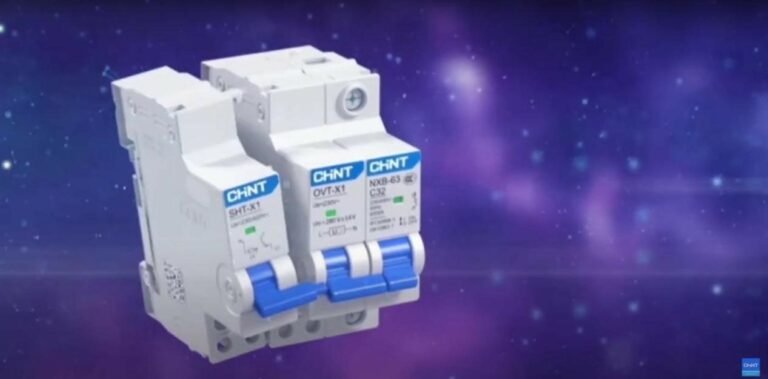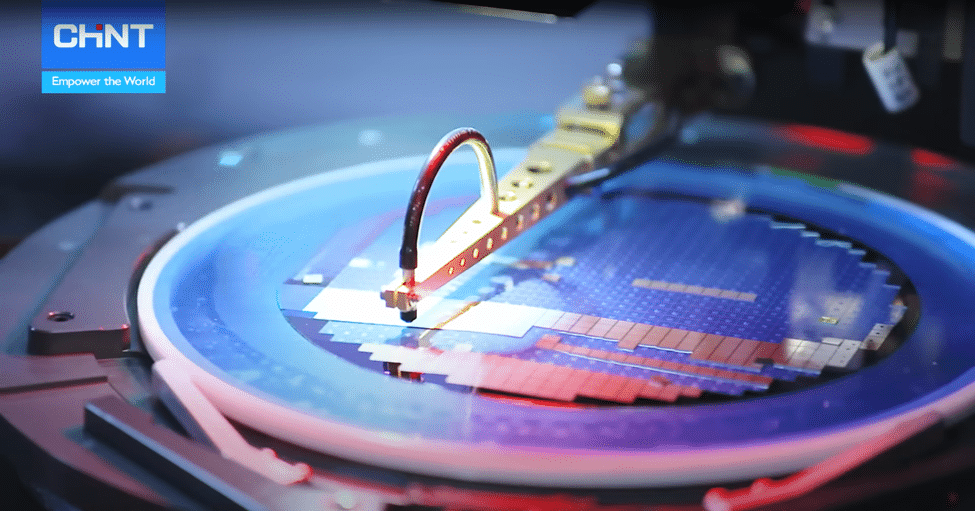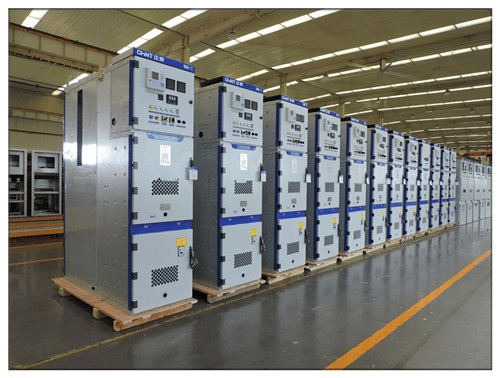Table of Contents
A circuit breaker is a device used to interrupt the flow of electric current through a circuit to protect against hazards such as electric shock or short circuits. The moulded case circuit breaker is a new type of fuse which has become popular recently due to its advantages over other circuit breakers. In this article, we’ll discuss the functions of Moulded Case Circuit Breaker(MCCB) and the working principal and applications of MCCBs.
What is Moulded Case Circuit Breaker (MCCB)?
Molded case circuit breaker (MCCB) is a type of surge protective device. The circuit breaker is installed in the main power supply cable, preventing over-voltage or voltage surges from entering the cable.
The primary function of this type of equipment is to protect the switching system, transformer, and other electrical devices from excess current overloads.
The MCCB is designed to ensure that no more than 50% of the normal operating current passes through a single phase or neutral wire. It has two main components: a surge arrester and a shunt trip mechanism.
The surge arrester connects the incoming power supply and its associated circuit breaker, which acts as a filter for electromagnetic interference (EMI). When there is too much current flowing through this wire, it will burn out and stop working. The shunt trip mechanism is located between each phase and the neutral bus bar to prevent them from being damaged by high currents when they pass through the circuit breaker’s fault zone during normal operation.
Function of MCCB
MCCBs are an essential part of any electrical installation. They are designed to withstand more than a million cycles of operation, which means they will be reliable for many years in service. Here are the main functions of MCCBs.
Protection Against Overloading
The main function of MCCB is to protect the circuit against overload by manual switching. When a load is connected to the circuit, the current will increase between the source and load due to the thermal effect. This current will cause overcurrent protection or an open circuit if it exceeds a certain value. To avoid such problems, MCCB can open automatically when exceeding a certain value of current flow through the CTs and load.
Protection Against Short Circuit
The main function of MCCB is protection against short-circuits by manual switching. A short circuit in an electric circuit will cause a loss of power, and overheated components may explode due to high-temperature conditions. To prevent this problem, MCCB can detect when a short-circuit occurs and close automatically when detected by sensing element or relay contacts without pressing any button on the panel itself because pressing any button may cause system failure due to overcurrent fault or fire hazard caused by overheated components or equipment.
Manual Switching Control
The MCCB is used in power circuits to control AC and DC load switching. It is also used to protect against short circuits. The MCCB acts as an interface between the power source and the load, providing current limiting and protection from overvoltages.
Working Principle of MCCB
When the voltage on the line exceeds the rated voltage, an arc starts in the gap between the two terminals. This causes a magnetic field to be created around the gap, which attracts or repels metal objects that are touching that gap. The MCCB generates an electric current through this gap, which keeps it open even after the breaker has cut off the power.
When current flows through a circuit breaker, it can become hot and may cause damage if not properly cooled down. That’s why modern circuit breakers have cooling fins attached to them, allowing air to flow over them and heat dissipation from inside them.
A molded case circuit breaker covers both sides of its housing, making it difficult for anyone trying to tamper with it to do so without getting caught by its internal mechanism.”

Applications of MCCB
MCCBs are widely used in the manufacturing industry. It is common to have a mixture of MCCBs in the production line of a factory. The reason is that they are used to cool the hot metal or plastic parts and make them more stable during their processing.
In addition, MCCBs can be used for many other applications. Here are some applications of MCCBs.
Adjustable Trip Settings
The MCCBs are used to provide adjustable trip settings for various motors. These settings can be changed according to the customer’s requirements and can be adjusted to suit the application. The MCCBs can be easily adjusted by turning the adjustment screw provided on the unit’s front face. The adjustment knob is also provided on this unit and can be easily turned manually or by using a screwdriver.
The MCCB has two different trip settings, namely normal and reverse. In the reverse case, there will be a lower limit speed setting that the user specifies, and below this limit speed, it will operate in reverse mode, and above this limit, it will operate in normal mode. In the case of normal mode, there will be an upper limit speed setting that the user specifies, and below this limit speed, it will operate in reverse mode, and above this limit, it will operate in normal mode.
Motor Protection
An MCCB is designed to protect motors from damage due to arc flash and short circuits caused by arcs. Arc flash occurs when an arc has sufficient power to cause damage to electrical components near it that are not protected by an insulating material (such as aluminum) or other means of protection (such as a ground). The result is that an arc flash event may cause injury or death due to electrocution, fire, or explosion.
An arc flash event also creates high levels of noise and heat energy, damaging sensitive electronic equipment such as computers, printers, scanners, and even some medical devices used in hospitals and clinics today. A protective device like an MCCB prevents these events by providing a sacrificial arc path that does not allow electricity to pass through during an arcing event.
Welding Machine Protection
MCCB protects the machine from electric arc and high voltage in the welding industry. The device is isolated from the supply side of the transformer by using an MCCB with grounding. It is also used to protect the machine from its supply line. An MCCB protects a transformer rated for 600 volts or higher and has a total rating of at least 200 amperes at 400 volts or less.

CHINT MCCB Circuit Breakers
CHINT MCCBs are designed to protect voltage, current, and power. These regulators are available in various models, including various NEMA-rated configurations. They can be used in applications where space is limited or for safety issues.
CHINT MCCBs offer several advantages over other types of circuit breakers. These include:
- Ability to withstand higher currents than standard circuit breakers
- Ability to withstand high temperatures without burning out
- Ability to withstand hydraulic pressure without damaging the breaker device
- Long life cycles compared to other circuit breakers
Here are some of the best CHINT MCCBs.
The DZ158 moulded case circuit breaker is the main circuit breaker in power distribution or industrial control systems. It has a compact design and is suitable for medium-sized applications. The current rating of the circuit breaker is 1600A and can withstand up to 250% overload.
The model features a vandal-proof design with a double cover that prevents tampering and reduces the infiltration of dust, water, and other contaminants into the unit when it is in operation. The DZ158 MCCB also has an integrated thermal overload protection device (TOU). This feature automatically disconnects the line when it reaches an overvoltage condition, which provides additional protection to surrounding equipment from damage caused by excessive voltage overloading.
A miniature circuit breaker is a small size circuit breaker that can be used for smaller and more delicate electrical equipment. It is also used for protecting small electrical equipment from overloads and overvoltage. The circuit breaker is UL listed, so it can be used in areas where the standard size circuit breaker cannot be installed.
Wrapping Up
The moulded case circuit breaker is one of the most popular in residential, commercial, and industrial buildings. Because of their durability and safety features, these circuit breakers are extensively used to disconnect and protect electrical systems.
Recommend Reading

What Are the Advantages of Miniature Circuit Breaker
Table of Contents What Is Miniature Circuit Breaker? A miniature circuit breaker is used in residential and commercial applications where only one phase of power

Residual Current Circuit Breakers (RCCB) Working Principle
Table of Contents Residual Current Circuit Breakers or RCCB are a very vital component for providing protection to electrical circuits. Thus RCCB electrical devices are used








